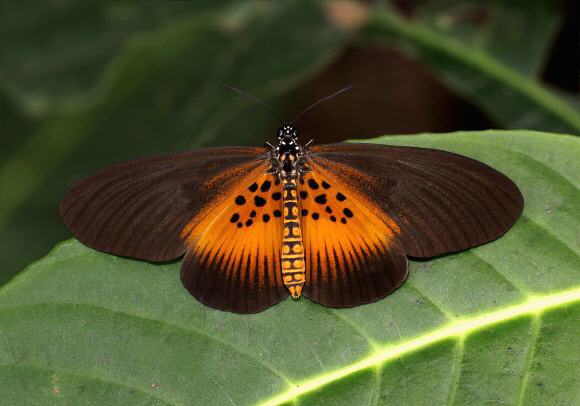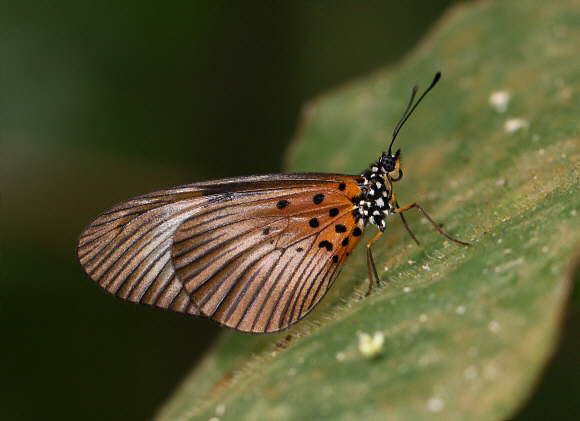
Introduction
There are 228 Acraea species, of which 223 are Afrotropical in distribution. The majority are found in the forests and savannahs of East Africa, while about 60 are found in West Africa. Beyond Africa a further 5 species occur in the Oriental region, and another is found in Australia / New Guinea. In the neotropical region there are 50 additional species, but these are normally placed in the genera Actinote, Altinote and Abananote due to differences in venation and genitalia.
All Acraea species have elongate forewings and rounded hindwings. The wings are thinly scaled and in many species are semi-transparent. The scales wear off very easily so that insects more than 4 or 5 days old have a glassy or greasy appearance. The majority of species have a predominantly brownish or greyish ground colour, marked with bands or patches of red or orange. The basal area of the underside hindwings of most species is marked with a pattern of small black spots.
Acraea vestalis is distributed from Senegal to western Tanzania.
Habitats
This species inhabits both primary and degraded forest, at altitudes between about 100-600m.
Lifecycle
The larva has been bred in captivity on Adenia ( Passifloraceae ) but the foodplants used in the wild are unknown.

Adult behaviour
Males seek sunspots, where dappled sunlight filters through the canopy onto low foliage. They use these as look-out posts from which to survey and intercept passing females. Both sexes nectar at a wide range of wild flowers. Males can also be encountered imbibing moisture from damp soil along sunny paths and tracks.
